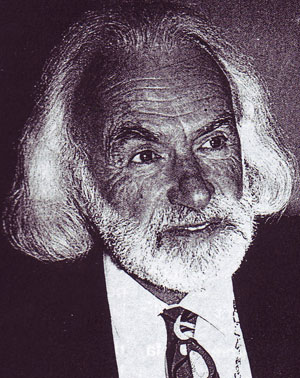Independent Scientific Thinker
 Austrian-born neuroscientist and thinker Karl H. Pribram is widely known for his research on the brain, his development of the holonomic brain model of cognitive function and his contribution to ongoing neurological research into memory, emotion, motivation and consciousness. A professor at Georgetown University and George Mason University, and an emeritus professor of psychology and psychiatry at Stanford University and Radford University, he has received many awards and was the first recipient of the Vaclav and Dagmar Havel Prize honoring significant thinkers whose work exceeds the traditional framework of scientific knowledge.
Austrian-born neuroscientist and thinker Karl H. Pribram is widely known for his research on the brain, his development of the holonomic brain model of cognitive function and his contribution to ongoing neurological research into memory, emotion, motivation and consciousness. A professor at Georgetown University and George Mason University, and an emeritus professor of psychology and psychiatry at Stanford University and Radford University, he has received many awards and was the first recipient of the Vaclav and Dagmar Havel Prize honoring significant thinkers whose work exceeds the traditional framework of scientific knowledge.
He is best known to the general public for his contribution to the ‘Holonomic Brain Model,’ in which he collaborated with quantum physicist David Bohm from the University of London. His studies challenged the dominant concept of the brain at the time. With his model he was able to explain that memory is distributed throughout the brain rather than in one specific location. Moreover, it is capable of storing many, many memories within a limited space and is not stored in cells but rather in interference patterns. As Pribram recalls: “The holographic idea was introduced during the early 1960s, and additional evidence accrued during the 1970s. After a period of relative neglect during the 1990s, it is now experiencing a resurgence. With the advent of PET and CAT scans, FMRI imaging techniques and digital cameras, people are working with the same principles and beginning to fully understand what is occurring. They have always regarded the brain as a sort of computer or telephone system or another technology, to use as analogies or metaphors. It helps to understand how the brain works.” What was once considered farsighted eventually provided an understanding in science that was foreshadowed by the research of Pribram and Bohm. Today, technological advances associated with brain oscillation patterns confirm the validity of these original insights.
When asked about the implications of his research on memory and the brain, and how it might help understand current medical conditions such as Alzheimers, he tells the story of Faraday, inventor of electricity. “Faraday was doing research on electricity and was supported by the government. When the British Minister of Finance, William Gladstone, came to see him and asked about the practical value of electricity, he answered, ‘someday you’ll be able to tax it.’ That was a century or more before electricity was lighting our houses and so on. My father even said they never expected electricity to be able to make enough light because it was so much dimmer than existing gas lights. Basic research always takes a long while, and the practical results are usually not at all what one expects. The fact that imaging techniques use the same principles as those used in basic research of the brain demonstrates the very practical results that have occurred.”
Pribram was never the purely traditional scientist, undertaking research in the name of rationality alone. On the contrary, he believed that science may have some implications for that which eludes the grasp of science, and thus, admits: “A colleague of mine once told me that I seem to have more the philosophy and approach of the Austrian mind. I have written a book on Freud, and certainly Freud was influenced, as we all were, by Viennese Neurology from the 1890s until the beginning of the First World War. I think Viennese philosophy was intuitive...and in that sense, I was influenced.”
In 1999 Pribram was honored with the Vaclav and Dagmar Havel Prize in Prague. Together with his wife, former Czech President and writer Vaclav Havel had established a foundation which awards a prize every year to an internationally renowned scholar. It honors significant thinkers whose work exceeds the traditional framework of scientific knowledge and contributes to the understanding of science as an integral part of the general culture. It is also concerned with unconventional ways of asking fundamental questions about cognition, being and human existence. Based upon these criteria, it is understandable that the first recipient to be honored to receive this award was American neuroscientist and thinker Karl H. Pribram.
In terms of the 21st century, he strongly believes that the scientific and spiritual aspects of mankind, which have been separated in our Western culture for three centuries since Galileo, will come together. As for developments in medicine, he predicts that “the impact of science is not doing something in medicine as much as it is changing the way we approach problems. In the future it will be much more about coming together with the humanities, creating a bridge between a materialist science and the humanities. Science has to get away from its purely materialist, reductionist way of thinking. Once that happens, we will have a more comprehensive way to approach things.”
